-
 Bitcoin
Bitcoin $106,754.6083
1.33% -
 Ethereum
Ethereum $2,625.8249
3.80% -
 Tether USDt
Tether USDt $1.0001
-0.03% -
 XRP
XRP $2.1891
1.67% -
 BNB
BNB $654.5220
0.66% -
 Solana
Solana $156.9428
7.28% -
 USDC
USDC $0.9998
0.00% -
 Dogecoin
Dogecoin $0.1780
1.14% -
 TRON
TRON $0.2706
-0.16% -
 Cardano
Cardano $0.6470
2.77% -
 Hyperliquid
Hyperliquid $44.6467
10.24% -
 Sui
Sui $3.1128
3.86% -
 Bitcoin Cash
Bitcoin Cash $455.7646
3.00% -
 Chainlink
Chainlink $13.6858
4.08% -
 UNUS SED LEO
UNUS SED LEO $9.2682
0.21% -
 Avalanche
Avalanche $19.7433
3.79% -
 Stellar
Stellar $0.2616
1.64% -
 Toncoin
Toncoin $3.0222
2.19% -
 Shiba Inu
Shiba Inu $0.0...01220
1.49% -
 Hedera
Hedera $0.1580
2.75% -
 Litecoin
Litecoin $87.4964
2.29% -
 Polkadot
Polkadot $3.8958
3.05% -
 Ethena USDe
Ethena USDe $1.0000
-0.04% -
 Monero
Monero $317.2263
0.26% -
 Bitget Token
Bitget Token $4.5985
1.68% -
 Dai
Dai $0.9999
0.00% -
 Pepe
Pepe $0.0...01140
2.44% -
 Uniswap
Uniswap $7.6065
5.29% -
 Pi
Pi $0.6042
-2.00% -
 Aave
Aave $289.6343
6.02%
Long lower shadow at low level: A reliable signal of successful bottoming?
A long lower shadow at a low level in crypto trading signals potential bullish reversal as buyers overpower sellers after sharp drops, often indicating weakening downtrend momentum.
Jun 16, 2025 at 07:28 am
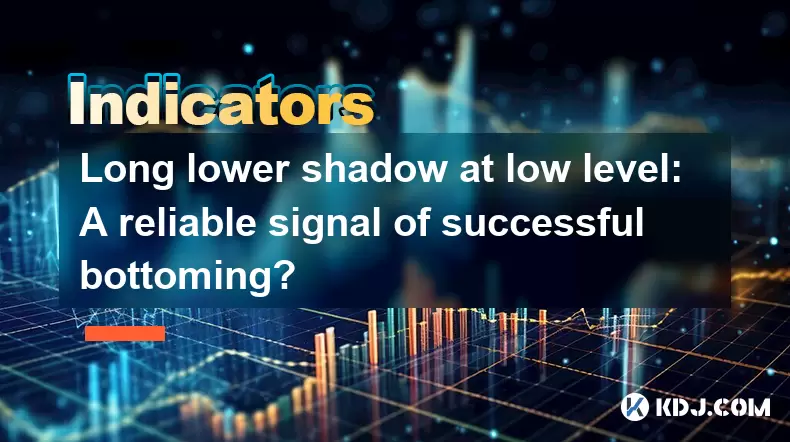
What Is a Long Lower Shadow at Low Level?
A long lower shadow at low level is a candlestick pattern that appears when the price of an asset, such as a cryptocurrency, drops significantly during a trading session but then recovers to close near or above the opening price. This results in a candle with a long tail (or wick) beneath the body, indicating that sellers initially dominated the market but were eventually overpowered by buyers.
This pattern typically occurs after a prolonged downtrend and may signal a potential reversal. In the context of cryptocurrencies like Bitcoin or Ethereum, which are known for their high volatility, this formation can be especially significant.
Key Insight: The longer the lower shadow relative to the candle’s body, the stronger the potential reversal signal.
How Does the Pattern Form in Cryptocurrency Markets?
In the crypto market, price action often reflects extreme sentiment swings due to news events, regulatory updates, or macroeconomic factors. When a long lower shadow forms at a low level, it usually indicates that the downward momentum has started to weaken.
During a bearish trend, sellers push prices lower, sometimes triggering panic selling or stop-loss orders. However, once the price reaches a certain psychological or technical support level, buyers begin to enter the market aggressively. This buying pressure causes the price to rebound before the session ends, forming the long lower shadow.
- Step 1: Price opens and immediately begins falling due to continued selling pressure.
- Step 2: Sellers drive the price down sharply, creating a large lower wick.
- Step 3: Buyers step in, pushing the price back up toward or beyond the opening level.
- Step 4: The candle closes with a small or non-existent upper wick, confirming buyer dominance by the end of the period.
Why Is This Pattern Considered a Reversal Signal?
The long lower shadow at low level is considered a bullish reversal pattern because it shows that despite strong selling pressure, demand re-emerged at lower levels. This dynamic suggests that bears are losing control and bulls may be preparing to take over.
In the crypto space, where sentiment plays a major role, such patterns often precede rallies. For instance, if Bitcoin forms a long lower shadow after hitting a multi-week low, traders might interpret this as a sign that institutional buyers or whales are accumulating coins at discounted prices.
Important Note: Confirmation from volume and other technical indicators is crucial before acting on this signal.
How to Confirm the Validity of the Signal
Not every long lower shadow leads to a reversal. To increase confidence in the pattern, traders should look for additional confluence factors:
- Volume Spike: A surge in trading volume during or after the candle forms confirms increased interest from buyers.
- Support Levels: If the candle forms near a known horizontal or trendline support, the likelihood of a bounce increases.
- Moving Averages: A long lower shadow forming near the 50-day or 200-day moving average adds credibility to the reversal attempt.
- RSI Divergence: A bullish divergence on the RSI indicator—where price makes a new low but RSI does not—can serve as confirmation.
It's also helpful to observe how the next few candles behave. A follow-through rally with higher highs and higher lows strengthens the case for a bottoming process.
Examples in Real Cryptocurrency Charts
Let’s consider a real-world example involving Ethereum (ETH). Suppose ETH has been declining for several weeks, dropping from $2,000 to $1,600. On one particular day, the price opens at $1,620 and quickly plummets to $1,550. However, buyers start absorbing the sell-off, and by the end of the session, ETH closes at $1,610, leaving behind a long lower shadow.
On the chart, this would appear as a hammer-like candle with a very long tail. If the next day sees a strong upward move, especially with increased volume, it supports the idea that the downtrend may be ending.
Another notable example occurred during Bitcoin’s crash in mid-2022. After falling below $20,000, several long lower shadow candles appeared, signaling possible capitulation. Some of these candles later marked short-term bottoms before modest recoveries.
Common Mistakes Traders Make With This Pattern
Despite its usefulness, many traders misinterpret or misuse the long lower shadow pattern. Here are some common pitfalls:
- Ignoring Context: Using the pattern in isolation without considering broader market conditions or trend direction.
- Failing to Wait for Confirmation: Entering trades based solely on the appearance of a long lower shadow without waiting for follow-through.
- Overtrading: Seeing the pattern too frequently and treating every occurrence as a trade setup, leading to unnecessary losses.
- Neglecting Risk Management: Not setting proper stop-loss levels or risking too much capital on a single trade based on this signal.
Understanding the limitations of the pattern and combining it with other tools is essential for successful trading.
Frequently Asked Questions
Q: Can a long lower shadow occur in both uptrends and downtrends?
Yes, although it is more meaningful in a downtrend as a potential reversal signal. In an uptrend, a similar pattern called a "shooting star" may indicate a bearish reversal.
Q: How long should the lower shadow be to qualify as a valid signal?
Typically, the lower shadow should be at least twice the length of the candle’s body. However, there’s no strict rule, and context matters more than exact measurements.
Q: Does this pattern work equally well across all timeframes?
No. While it can appear on any timeframe, it tends to be more reliable on daily or weekly charts compared to shorter ones like 1-hour or 15-minute intervals, which are more prone to noise.
Q: Should I always wait for the next candle to confirm the pattern?
Yes. Waiting for the next candle to close above the long lower shadow candle’s high provides a more robust confirmation and reduces false signals.
Disclaimer:info@kdj.com
The information provided is not trading advice. kdj.com does not assume any responsibility for any investments made based on the information provided in this article. Cryptocurrencies are highly volatile and it is highly recommended that you invest with caution after thorough research!
If you believe that the content used on this website infringes your copyright, please contact us immediately (info@kdj.com) and we will delete it promptly.
- 2025-W Uncirculated American Gold Eagle and Dr. Vera Rubin Quarter Mark New Products
- 2025-06-13 06:25:13
- Ruvi AI (RVU) Leverages Blockchain and Artificial Intelligence to Disrupt Marketing, Entertainment, and Finance
- 2025-06-13 07:05:12
- H100 Group AB Raises 101 Million SEK (Approximately $10.6 Million) to Bolster Bitcoin Reserves
- 2025-06-13 06:25:13
- Galaxy Digital CEO Mike Novogratz Says Bitcoin Will Replace Gold and Go to $1,000,000
- 2025-06-13 06:45:13
- Trust Wallet Token (TWT) Price Drops 5.7% as RWA Integration Plans Ignite Excitement
- 2025-06-13 06:45:13
- Ethereum (ETH) Is in the Second Phase of a Three-Stage Market Cycle
- 2025-06-13 07:25:13
Related knowledge
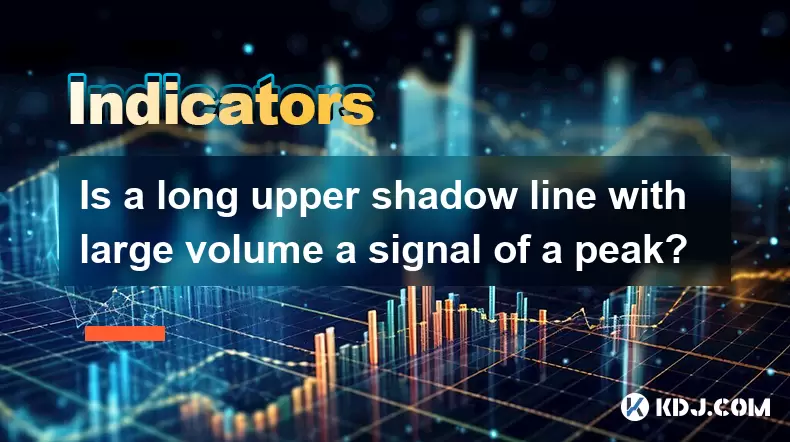
Is a long upper shadow line with large volume a signal of a peak?
Jun 17,2025 at 05:07am
Understanding the Long Upper Shadow LineA long upper shadow line, often referred to as a shooting star or inverted hammer depending on its location in a chart, is a candlestick pattern that indicates potential reversal from an uptrend. This pattern forms when prices rise significantly during the trading period but then fall back to close near the openin...

How to confirm the effectiveness of the average price line support in the time-sharing chart?
Jun 17,2025 at 12:56am
Understanding the Time-Sharing Chart and Its RelevanceIn cryptocurrency trading, time-sharing charts play a crucial role in analyzing short-term price movements. These charts typically display price fluctuations over a specific period, often ranging from minutes to hours. Traders rely on them to make quick decisions based on real-time data. The average ...

What does it mean when the momentum indicator breaks above the zero axis?
Jun 17,2025 at 12:43am
Understanding the Momentum IndicatorThe momentum indicator is a technical analysis tool used to measure the speed or velocity of price movements in cryptocurrency markets. It helps traders identify potential trend reversals, overbought or oversold conditions, and confirms existing trends. The indicator typically oscillates around a zero line, with value...
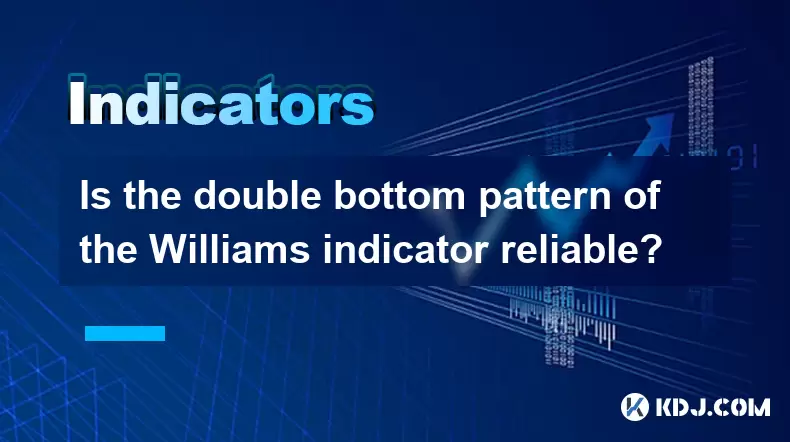
Is the double bottom pattern of the Williams indicator reliable?
Jun 17,2025 at 03:56am
Understanding the Williams Indicator and Its SignificanceThe Williams %R indicator, often referred to as Williams Percent Range, is a momentum oscillator used in technical analysis to identify overbought or oversold conditions in the market. Developed by Larry Williams, this indicator fluctuates between 0 and -100, with readings above -20 indicating ove...
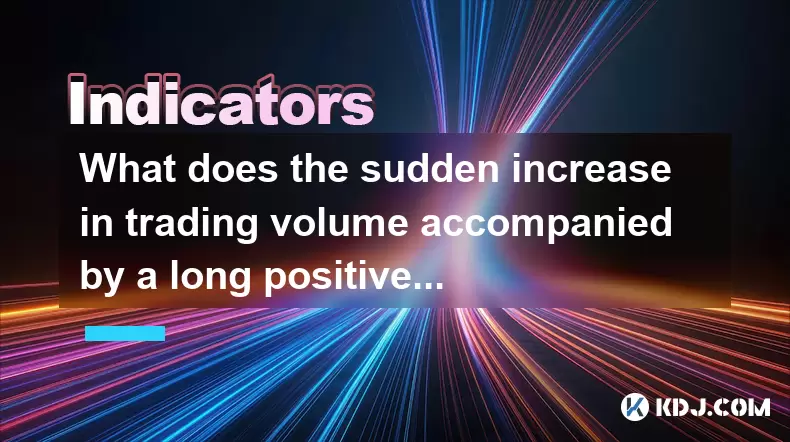
What does the sudden increase in trading volume accompanied by a long positive line mean?
Jun 17,2025 at 06:01am
Understanding the Sudden Surge in Trading VolumeWhen traders observe a sudden increase in trading volume, it typically signals a significant shift in market sentiment. This surge often indicates that more participants are entering or exiting positions, which could be due to news events, macroeconomic data releases, or institutional activity. High tradin...
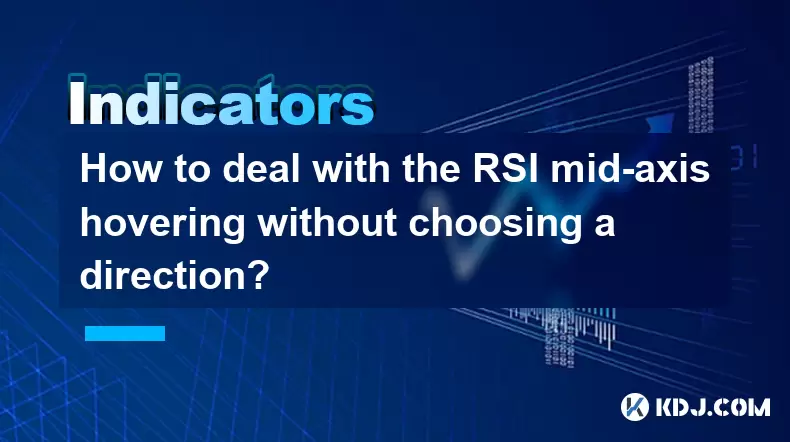
How to deal with the RSI mid-axis hovering without choosing a direction?
Jun 17,2025 at 02:02am
Understanding RSI Mid-Axis Hovering in Cryptocurrency TradingThe Relative Strength Index (RSI) is a popular momentum oscillator used by traders to assess whether an asset is overbought or oversold. In cryptocurrency markets, it's common for the RSI to hover around its mid-axis, typically at the 50 level, without showing a clear upward or downward trend....

Is a long upper shadow line with large volume a signal of a peak?
Jun 17,2025 at 05:07am
Understanding the Long Upper Shadow LineA long upper shadow line, often referred to as a shooting star or inverted hammer depending on its location in a chart, is a candlestick pattern that indicates potential reversal from an uptrend. This pattern forms when prices rise significantly during the trading period but then fall back to close near the openin...

How to confirm the effectiveness of the average price line support in the time-sharing chart?
Jun 17,2025 at 12:56am
Understanding the Time-Sharing Chart and Its RelevanceIn cryptocurrency trading, time-sharing charts play a crucial role in analyzing short-term price movements. These charts typically display price fluctuations over a specific period, often ranging from minutes to hours. Traders rely on them to make quick decisions based on real-time data. The average ...

What does it mean when the momentum indicator breaks above the zero axis?
Jun 17,2025 at 12:43am
Understanding the Momentum IndicatorThe momentum indicator is a technical analysis tool used to measure the speed or velocity of price movements in cryptocurrency markets. It helps traders identify potential trend reversals, overbought or oversold conditions, and confirms existing trends. The indicator typically oscillates around a zero line, with value...

Is the double bottom pattern of the Williams indicator reliable?
Jun 17,2025 at 03:56am
Understanding the Williams Indicator and Its SignificanceThe Williams %R indicator, often referred to as Williams Percent Range, is a momentum oscillator used in technical analysis to identify overbought or oversold conditions in the market. Developed by Larry Williams, this indicator fluctuates between 0 and -100, with readings above -20 indicating ove...

What does the sudden increase in trading volume accompanied by a long positive line mean?
Jun 17,2025 at 06:01am
Understanding the Sudden Surge in Trading VolumeWhen traders observe a sudden increase in trading volume, it typically signals a significant shift in market sentiment. This surge often indicates that more participants are entering or exiting positions, which could be due to news events, macroeconomic data releases, or institutional activity. High tradin...

How to deal with the RSI mid-axis hovering without choosing a direction?
Jun 17,2025 at 02:02am
Understanding RSI Mid-Axis Hovering in Cryptocurrency TradingThe Relative Strength Index (RSI) is a popular momentum oscillator used by traders to assess whether an asset is overbought or oversold. In cryptocurrency markets, it's common for the RSI to hover around its mid-axis, typically at the 50 level, without showing a clear upward or downward trend....
See all articles

























































































